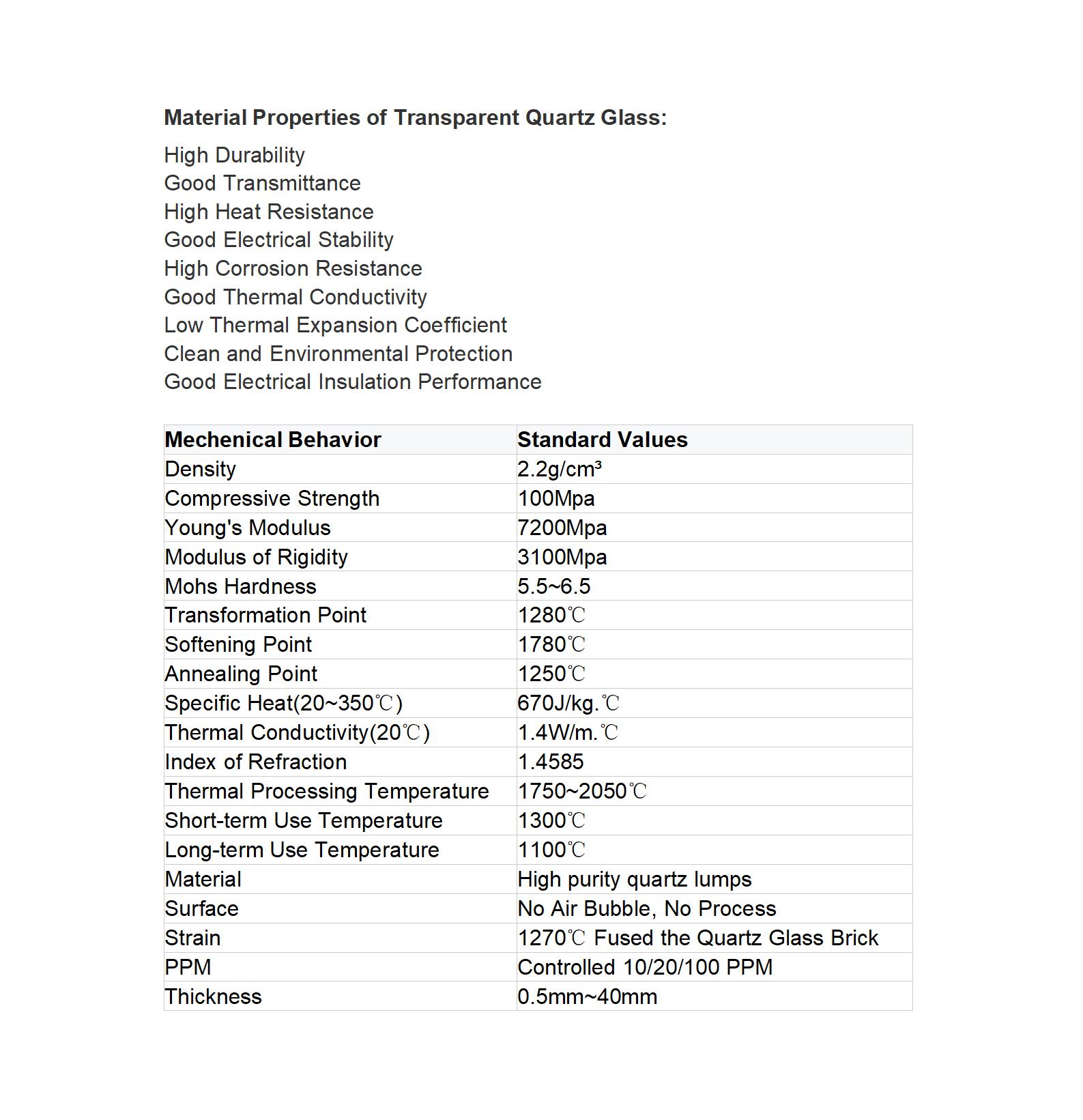T: +86-518-85528012
E: nick@luverrequartz.com
E: nick@luverrequartz.com
1st floor Runlian industrial center No. 116 QuFeng Rd., Haizhou Economic and technological development zone Lianyungang City, Jiangsu Province, China 222062
High transmittance photomask substrate quartz glass plate
High transmittance photomask substrate quartz glass plate is one of the key basic materials in semiconductor technology.
LUVERRE quartz
99.99%
Inner with Vacuum PVC bag and then wrapped with air bubble film, outer with wooden box.
as per customer's requirement
| Availability: | |
|---|---|
High transmittance photomask substrate quartz glass plate
High transmittance photomask substrate quartz glass plate is one of the key basic materials in semiconductor technology. This type of quartz glass substrate is mainly used in the fields of semiconductor chips and flat panel displays, and is an important component of photomask technology. Photomask technology plays a crucial role in semiconductor manufacturing, as it replicates the circuit patterns on the mask onto chips or liquid crystal panel glass through photolithography, enabling mass production of integrated circuits or liquid crystal panels.

Photomask substrates can be divided into quartz glass mask substrates, borosilicate glass mask substrates, and soda glass (soda lime glass) mask substrates based on their glass composition. Quartz glass substrates have advantages in material selection for photomask substrates due to their high optical transmittance, low thermal expansion, excellent spectral characteristics, high hardness, and long service life, and the market demand is increasing year by year.
The manufacturing process of quartz glass substrates includes melting, hot processing, and cold processing. Although the technology of synthesizing quartz glass is advanced, it is complex and requires highly precise process control. In recent years, with the integrated development of semiconductor technology, the material properties and processing accuracy requirements for photomask quartz glass substrates have become increasingly high, and the process requirements for their preparation have also become increasingly stringent.

The application of high transmittance photomask substrate quartz glass plate in the fields of semiconductor and flat panel display is increasing day by day, and the requirements for material properties and processing accuracy are also constantly improving, which promotes the continuous development and innovation of related technologies.
High transmittance photomask substrate quartz glass plate
High transmittance photomask substrate quartz glass plate is one of the key basic materials in semiconductor technology. This type of quartz glass substrate is mainly used in the fields of semiconductor chips and flat panel displays, and is an important component of photomask technology. Photomask technology plays a crucial role in semiconductor manufacturing, as it replicates the circuit patterns on the mask onto chips or liquid crystal panel glass through photolithography, enabling mass production of integrated circuits or liquid crystal panels.

Photomask substrates can be divided into quartz glass mask substrates, borosilicate glass mask substrates, and soda glass (soda lime glass) mask substrates based on their glass composition. Quartz glass substrates have advantages in material selection for photomask substrates due to their high optical transmittance, low thermal expansion, excellent spectral characteristics, high hardness, and long service life, and the market demand is increasing year by year.
The manufacturing process of quartz glass substrates includes melting, hot processing, and cold processing. Although the technology of synthesizing quartz glass is advanced, it is complex and requires highly precise process control. In recent years, with the integrated development of semiconductor technology, the material properties and processing accuracy requirements for photomask quartz glass substrates have become increasingly high, and the process requirements for their preparation have also become increasingly stringent.

The application of high transmittance photomask substrate quartz glass plate in the fields of semiconductor and flat panel display is increasing day by day, and the requirements for material properties and processing accuracy are also constantly improving, which promotes the continuous development and innovation of related technologies.